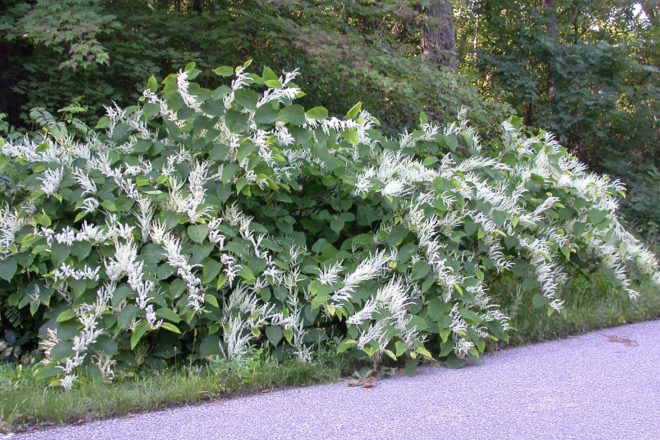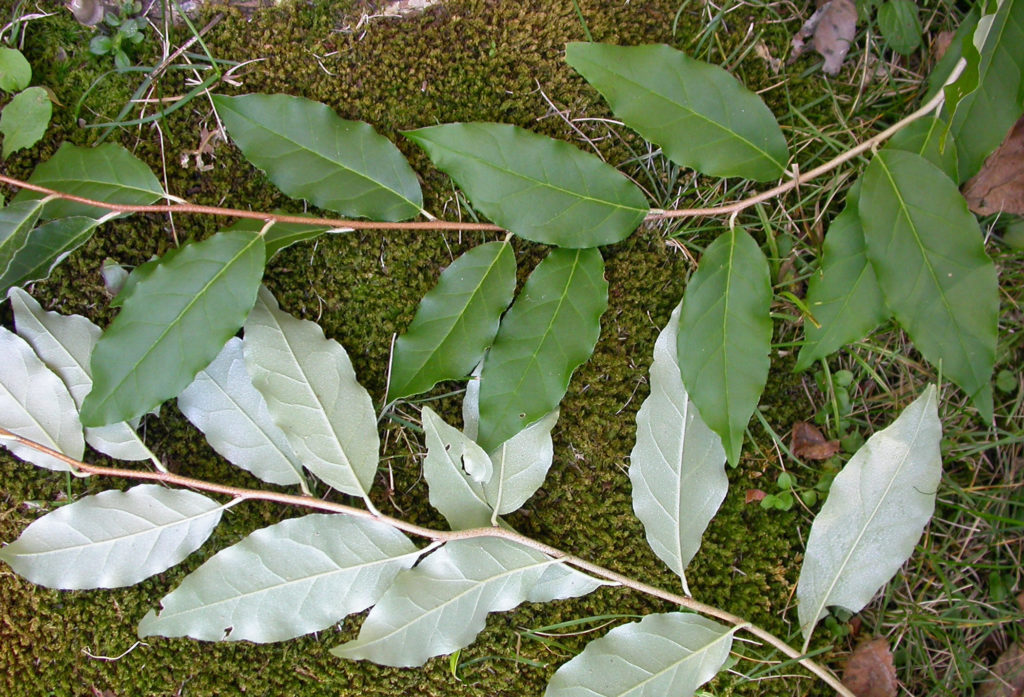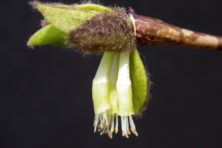Door to Nature: Invasive Roadside Shrubs
- Share
- Tweet
- Pin
- Share

There are many weedy plants along the roadsides that county workers mow once or twice a summer. This mowing helps to spread the seeds along the shoulders of the roads, so we’ll never be rid of these nonnative plants. Some do provide seeds for migrating birds, however.
There are other plants that develop along the roadsides, just beyond the reach of the mowers, and that are proliferating in parts of central Door County. One – the autumn olive shrub – is covering the land with its vicious, thorny branches. The sharp thorns on older plants can be up to one inch long. It has deep-green leaves with shiny, grayish undersurfaces, and it produces many flowers in June and a great crop of berries in the fall.
Birds eat these fruits and “pass on” the seeds to be planted wherever they perch, which is often on the power lines along the roadsides. That’s why this plant is so abundant and continues to spread. These invasive shrubs crowd out the native ones and make it difficult to grow anything else in these areas.

My friend John worked with me to cut the autumn olive plants along my 900-foot-long driveway last fall. He clipped them off near the ground, and then I used a narrow brush to swab the cut ends with a full-strength woody-plant killer. We treated all those along my section of Hillside Road as well. Autumn is the time to do this because tree fluids are then being drawn back into the roots.
We will have to do this every autumn because new plants begin to grow from seeds dropped by birds. It’s also easy to miss very small autumn olive shrubs that were growing a year ago but may have been hidden by other plants.
Another shrubby plant that’s now in bloom – Japanese knotweed – can become very invasive. Other names for this large plant are Japanese bamboo, Mexican bamboo, fleeceflower and Hancock’s curse. Several have been growing along County E just east of Logerquist Road. I thought most had been removed, but now they can be seen again in full flower.
Japanese knotweed belongs to the genus Polygonum (po-LIG-o-num), which is Greek for “many jointed.” That refers to its segmented or jointed stalks, which may remind you of bamboo. It becomes very noticeable in September, with its many loose clusters of plume-like, whitish flowers. A well-established patch can have some individual plants growing 10-12 feet tall.
The species name of this rapidly spreading invasive is cuspidatum (kus-pi-DAY-tum), referring to the abruptly pointed leaves that are three to four inches wide and six inches long. They are quite broad at the base, rounded and egg shaped. The base of the leaf clasps the stem.
Another problem shrub that has spread over much of the state is buckthorn. There are two invasive species: Rhamnus frangula is the glossy form, and R. cathartica is the common form. The more abundant common buckthorn is native to Europe and western Asia and was introduced to our country in the early 1800s as an ornamental shrub.
These plants can grow to a height of 25 feet and become quite dense, crowding out other native plants. They have oval leaves that are one to two and a half inches long, with finely toothed edges. Pea-sized fruits develop on the female plants in midsummer and ripen into black berries by autumn. Most of the branches are tipped with spines.
Strangely, there are two species of native buckthorn that grow in the Great Lakes region. Alder-leaved buckthorn, R. alnifolia, is a spreading shrub that’s rarely more than three feet tall. It can be found at Toft Point and The Ridges Sanctuary. The other native species is R. lanceolata, the lance-leaved buckthorn.
The last invasive shrub that has covered much of Door County is the Tartarian honeysuckle, which grows on roadsides and in many shrubby fields. It has many pink or white flowers, which are pollinated and turn into red berries, which are then eaten by birds and spread via their droppings.
If you own land that has these invasives growing on it, please do all you can to be a great land steward by eradicating them.



